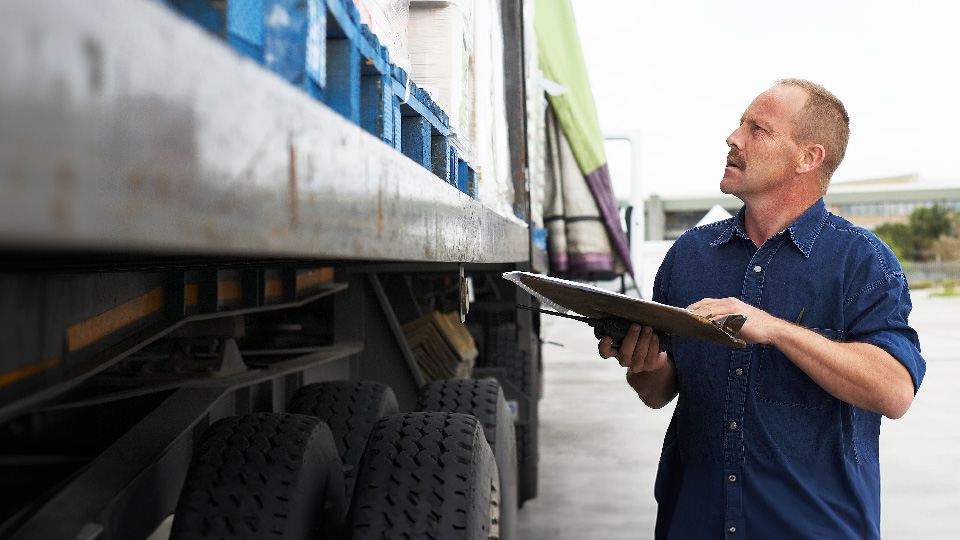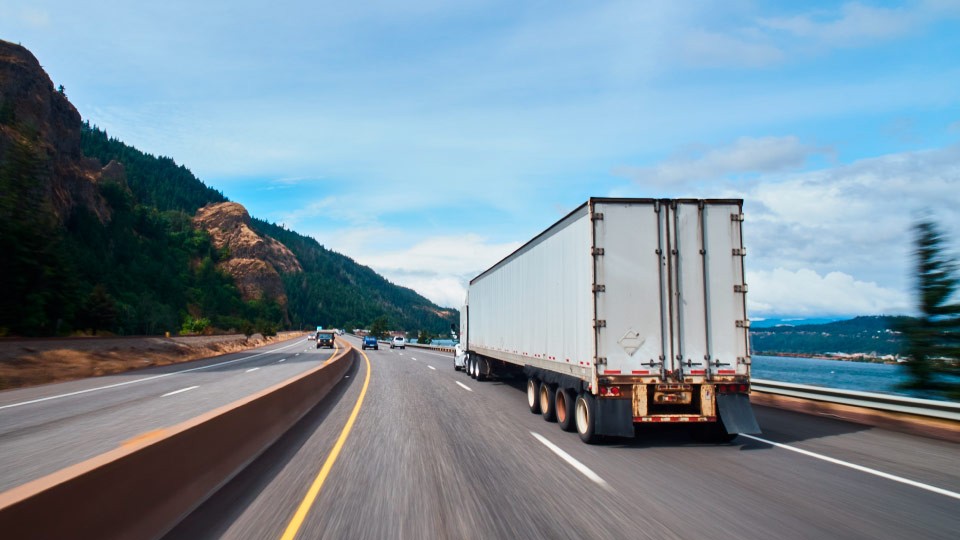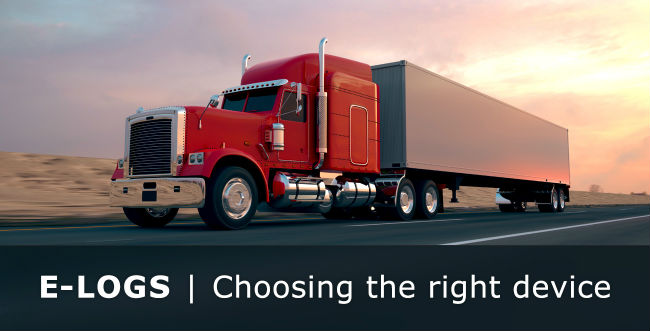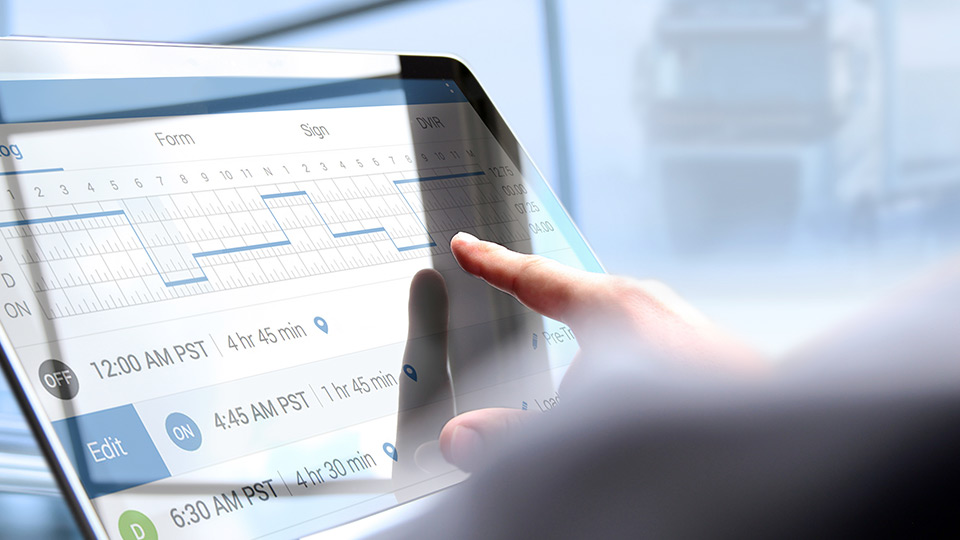California Intrastate ELD Mandate: What You Need to Know
California is aligning its intrastate electronic logging device (ELD) regulations with the Federal FMCSA ELD mandate. Will your fleet be ready?

March 20, 2024
•3 minute read

Effective January 1, 2024, intrastate motor carriers and drivers in California are required to use an electronic logging device (ELD) to record a driver's record of duty status (RODS), according to the California Highway Patrol (CHP). This includes those operating in intrastate commerce.
California ELD law on Intrastate Electronic Logging Devices
California ELD Requirements
California is falling in line with the Federal Motor Carrier Safety Administration (FMCSA) ELD mandate for interstate motor carrier(s) and interstate driver(s) and will require intrastate commercial drivers to use ELDs instead of paper logbooks, starting on January 1, 2024. Drivers required to keep a logbook to comply with hours of service rules must do so using an electronic logging device listed on the FMCSA list of self-certified devices, with a few key ELD exemptions. How can you make sure your fleet is ready for the change in Federal Motor Carrier Safety Regulations?
What is the California ELD intrastate mandate?
In the state of California, intrastate drivers must accurately track their hours of service (HOS) in order to remain compliant. Currently, they are allowed to do so using paper logs – however, starting on January 1, 2024, the state will align with the FMCSA’s ELD mandate, which “is intended to help create a safer work environment for drivers, and make it easier and faster to accurately track, manage, and share records of duty status (RODS) data. An ELD synchronizes with a vehicle engine to automatically record driving time, for easier, more accurate hours of service (HOS) recording.”
This is not a change to the HOS rules, simply a change in how HOS will be recorded and documented. According to the California Highway Patrol’s (CHP) Notice of Proposed Regulation, “The actions will enhance the safe operation of motor vehicles and increase the competitiveness of California carriers by eliminating or modifying, to the extent possible, regulations which conflict with updated federal regulations, reducing negative impacts on businesses.”
Who is exempt from the California ELD intrastate mandate?
Several exemptions exist from the new California ELD intrastate mandate. Drivers under these exemptions can still continue using a paper log book:
- Commercial drivers operating a CMV driveaway-towaway operation
- Commercial drivers operating a CMV to transport a motor vehicle or an empty or unladen vehicle
- Commercial drivers operating a CMV manufactured before model year 2000, or a CMV manufactured in model year 2000 or newer that has an engine replacement predating model year 2000
- Drivers not operating a CMV more than 8 days in a 30-day period
How are the FMCSA ELD mandate and the California intrastate ELD mandate different?
There are a few ways in which the FMCSA and California ELD regulations differ. Drivers must understand and acknowledge these differences to stay informed.
FMCSA ELD mandate (Federal) | California ELD Intrastate mandate (State) |
| Commercial drivers are exempt from using an ELD in California if they drive within a 100 air-mile radius of the base of their operations. | Commercial drivers are exempt from using an ELD if they drive within a 100 air-mile radius of the base of their operations. Drivers may still use the 150 air-mile radius exemption for "short-haul operations" as outlined in federal regulations. |
| Maximum number of hours worked is 14 hours. | Maximum duty period is 12 hours. |
| Mandatory 30-minute rest break after 8 hours of driving. | No 30-minute rest break requirement. |
| Non-exempt drivers may only drive 11 of the 14 hours. | Non-exempt drivers may drive 12 hours of the 16 hours on-duty for trucks, 15 hours for bus operators. (The 16 hour rule in California states that a work shift cannot be more than 16 hours. Drivers need eight consecutive hours off to be able to record themselves as driving again) |
| May extend duty period up to 2 hours. | May extend driving period up to 2 hours, but not the duty period. |
What are some ELD-related roadside violations in California?
Now that California is implementing an ELD intrastate mandate, it’s important to understand how and why your drivers can be fined for being in violation of this mandate. There are certain ELD rules and regulations that they will need to follow in order to be in compliance with this new mandate.
The California ELD Intrastate mandate can penalize drivers in the following instances:
- Their vehicle is required to have an ELD but doesn’t
- Their ELD can’t be viewed from outside the vehicle
- The driver has been operating a vehicle with a malfunctioning ELD for more than eight days
- The driver failed to record an ELD malfunction or notify the carrier in writing within 24 hours
- The driver doesn’t know how to transfer ELD data to the FMCSA Web Service – California only accepts the telematic method of transfer
- The driver doesn’t have blank logbook pages – or instructions for operating the ELD – in case of a malfunction
- The driver failed to present the ELD cab card to enforcement
- The driver failed to verify the accuracy of the information gathered by the ELD
- The driver failed to manually add the shipping document number
How can I avoid California ELD mandate violations?
Thankfully, the FMCSA has a list of approved ELD providers to help you comply with the ELD requirement and avoid penalties.
ELDs can also provide additional benefits for your fleet management, apart from simply keeping you compliant, such as:
- Tracking idling and reducing fuel costs
- Tracking driver behavior to improve safety
- Analyzing fleet data to improve operational efficiency
- Automating fuel tax reporting
- Improving fleet uptime by tracking diagnostic data
To learn more about the benefits, visit our ELD Solution page.
Subscribe to get industry tips and insights

Christine is the Content Manager for the Geotab Marketplace.
Table of Contents
- California ELD Requirements
- What is the California ELD intrastate mandate?
- Who is exempt from the California ELD intrastate mandate?
- How are the FMCSA ELD mandate and the California intrastate ELD mandate different?
- What are some ELD-related roadside violations in California?
- How can I avoid California ELD mandate violations?











